NIMBioS Calendars: Events Seminars Live Streaming Visitors Working Groups Workshops Tutorials Other
2013 Archive: NIMBioS Seminars
 In conjunction with the interdisciplinary activities of the National Institute for Mathematical and Biological Synthesis (NIMBioS), a seminar series on topics in mathematical biology is hosted at NIMBioS every other Tuesday at 3:30 p.m. (unless otherwise noted) in Hallam Auditorium, Room 206, Claxton Building, 1122 Volunteer Blvd.
Seminar speakers focus on their research initiatives at the interface of mathematics and many areas of the life sciences. Light refreshments are served in the 1st floor visitor breakroom beginning 30 minutes before each talk. Faculty and students from across the UT community are welcome to join us.
In conjunction with the interdisciplinary activities of the National Institute for Mathematical and Biological Synthesis (NIMBioS), a seminar series on topics in mathematical biology is hosted at NIMBioS every other Tuesday at 3:30 p.m. (unless otherwise noted) in Hallam Auditorium, Room 206, Claxton Building, 1122 Volunteer Blvd.
Seminar speakers focus on their research initiatives at the interface of mathematics and many areas of the life sciences. Light refreshments are served in the 1st floor visitor breakroom beginning 30 minutes before each talk. Faculty and students from across the UT community are welcome to join us.
Video Archive of NIMBioS Seminars
Archived Seminar Calendars:
2020
2019
2018
2017
2016
2015
2014
2013
2012
2011
2010
2009
NIMBioS Fall 2013 Interdisciplinary Seminar Series:
Printable Flyer
NIMBioS Seminar Abstracts 2013
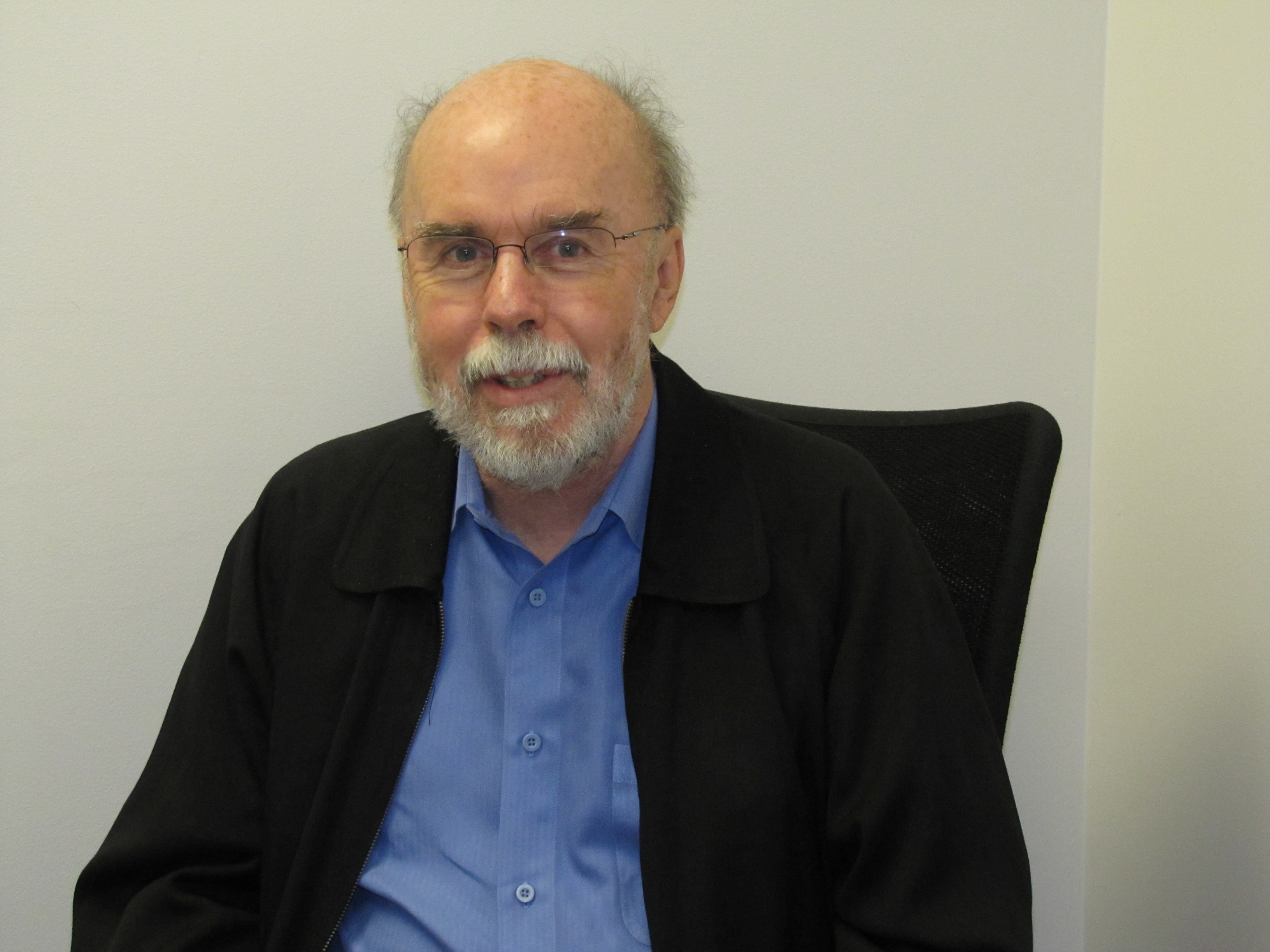 Time/Date: 3:30 p.m., Tuesday, November 19
Time/Date: 3:30 p.m., Tuesday, November 19Location: Room 105, Claxton Building, 1122 Volunteer Blvd.
Speaker: Roger Nisbet, Ecology, Evolution and Marine Biology, Univ. of California, Santa Barbara, and NIMBioS Postdoctoral Fellow Invited Distinguished Visitor
Topic: Modeling environmental impacts of engineered nanomaterials: The value of 'generic models' of individual organisms
Abstract: Mathematical models are contributing to synthesis of information on an emerging environmental challenge: to understand the implications of the rapidly growing use of engineered nanomaterials (ENMs). Release of ENMs into soil and water is inevitable, and the ecological consequences are unknown. There is a near limitless combination of ENMs, organisms, and environments of potential importance, but there are limited resources for (expensive) ecological studies. In contrast, there is a large, and growing, body of data on organismal and suborganismal responses to ENMs. Progress in understanding ecological implications of ENMs in the environment requires theory that takes advantage of this knowledge base. I shall describe an approach based on Dynamic Energy Budget (DEB) theory, illustrated by three applications to nanotoxicology: (i) a study of the response of bacteria to quantum dots that illustrates the role in model selection of data on suborganismal dynamics; (ii) a model of phytoplankton populations exposed to silver nanoparticles (AgNPs) that demonstrates the importance of a feedback mechanism involving metabolic "waste" products; (iii) individual based models of the effects of AgNPs on phytoplankton-zooplankton interactions that suggest the concept of ontogenetic asymmetry may help elucidate the population level consequences of impacts mediated by different physiological modes of action. Click here for more information. Seminar flyer (pdf).
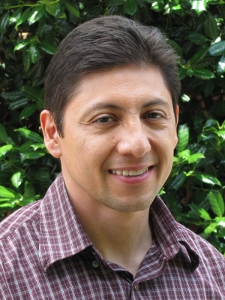 Time/Date: 3:30 p.m., Tuesday, November 5
Time/Date: 3:30 p.m., Tuesday, November 5Location: Room 105, Claxton Building, 1122 Volunteer Blvd.
Speaker: Clemente Aguilar, NIMBioS postdoctoral fellow
Topic: Computational characterization of GPI-anchored proteins in Trypanosoma cruzi and their potential use as vaccine candidates
Abstract: The plasma membrane of the causative agent of Chagas' disease, the parasite Trypanosoma cruzi, is covered with a dense, protective surface coat. This surface coat is a monolayer of millions of variant surface glycoproteins (VSG) that protect the parasite from the innate immune system and, through antigenic variation, against the specific host immune response. Most VSGs in the parasite are proteins attached to the cell membrane via glycosylphosphatidylinositol (GPI) anchors. A better understanding of GPIs could lead to the discovery of new anti-trypanosome drugs or a preventive vaccine against the disease. Liquid chromatography tandem mass spectrometry (LC-MS/MS) is often the technique of choice for characterizing GPIs. However, experimental samples consist of thousands of MS spectra, each of which is a complex piece of data that must be analyzed to extract relevant information about the biomolecules. These data sets are often noisy and therefore require sophisticated and robust tools that are capable of efficiently processing the information. No computational tool for characterizing the chemical structures of GPI is available to date. In this talk I will describe a proposed computational approach for the identification and characterization of GPIs in LC-MS/MS datasets. Additionally, the role of GPIs as vaccine candidates will be discussed. Click here for more information. Seminar flyer (pdf).
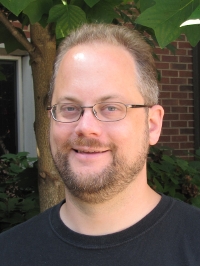 Time/Date: 3:30 p.m., Tuesday, October 29
Time/Date: 3:30 p.m., Tuesday, October 29Location: NIMBioS, Room 105, Claxton Building, 1122 Volunteer Blvd.
Speaker: Nicholas Matzke, NIMBioS postdoctoral fellow
Topic: Statistical model choice in phylogenetic biogeography: Inference of speciation processes and ancestral range, and prospects for integration with species distribution modeling (SDM)
Abstract: Historical biogeography has been characterized by unresolved debates about which processes, such as dispersal or vicariance, are most important for explaining geographic distributions. Biogeography programs typically make fixed assumptions about which processes are allowed, and these assumptions dominate inference. A new R package, BioGeoBEARS (phylo.wikidot.com/biogeobears), implements the most popular models (LAGRANGE DEC, DIVA, BayArea) in a common likelihood framework, and adds new "+J" models that allow jump dispersal/founder-event speciation. Statistical model choice shows that founder-event speciation is a crucial process in almost every clade, although it is measurably weaker in non-island systems. Simulations indicate that better models estimate ancestral ranges with dramatically greater confidence, and higher accuracy. All of these models are special cases of a supermodel implemented in BioGeoBEARS, enabling estimation of the relative importance of different speciational modes given sufficient data. At the conclusion of my talk, I outline a program to expand this research by linking phylogenetic biogeography with species distribution modeling (SDM). Standard SDM is done one-species-at-a-time, ignoring phylogenetic autocorrelation, and typically ignores non-climatic causes of distributions such as dispersal limitation. As a result, all of these factors are confounded in current environmental niche models. With a combined approach we may be able to untangle these factors. Click here for more information. Seminar flyer (pdf).
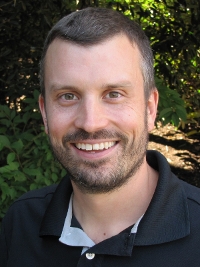 Time/Date: 3:30 p.m., Tuesday, October 8
Time/Date: 3:30 p.m., Tuesday, October 8Location: Room 105, Claxton Building, 1122 Volunteer Blvd.
Speaker: Matt Zefferman, NIMBioS postdoctoral fellow
Topic: Cultural evolution of human cooperation and conflict
Abstract: Humans seemingly have a greater capacity for altruistic cooperation with non-relatives than any other species. For example, in experiments humans cooperate more than one would expect either from cross-species comparisons or by calculating payoff-maximizing behavior. Two main hypotheses have sought to explain this - the mismatch hypothesis, where humans evolved genetically-inherited rules for cooperation in small kin groups and misapply them in modern contexts, and the norm psychology hypothesis, where humans evolved the capacity for to learn cooperative norms. I show that a model developed to support the former hypothesis actually better supports the latter. Similarly, in warfare humans take large risks to benefit group members who are mostly non-relatives. Quite a few hypotheses have been proposed to explain this, however these hypotheses are fundamentally incomplete when they do not account for both cultural inheritance and group-structure. Finally, explaining cooperation in larger-scale complex human societies has been difficult since many of the institutions that work in small-scale societies become less effect ive as group size increases. Hierarchical organization seems a potential solution to increasing group size, though the basic theory of has not been established. I present a preliminary model of hierarchy's origins that I will develop as a NIMBioS post-doc. Click here for more information. Seminar flyer (pdf).
 Time/Date: 3:30 p.m. p.m., Tuesday, September 24
Time/Date: 3:30 p.m. p.m., Tuesday, September 24Location: Room 105, Claxton Building, 1122 Volunteer Blvd.
Speaker: Shi Chen, Postdoctoral Research Associate, Biomedical and Diagnostic Sciences, Univ. of Tennessee
Topic: Understanding individual, temporal, and spatial heterogeneity in directly and indirectly transmitted disease systems in cattle
Abstract: Heterogeneity, such as individual, temporal, and spatial variability, substantially influences disease dynamics in cattle. However, current studies still lack comprehensive understanding and quantitative characterization on this issue. Our study starts from investigating spatial heterogeneity associated with both environmental pathogen concentration and host-environment contact variability in an indirectly transmitted disease system. Then we investigate real contact network in animal population at high spatial and temporal resolution, and link the observed highly dynamic contact network with directly transmitted disease system to highlight the importance of the change in network structure and individual rank. We will also model the interaction between the indirectly and directly transmitted pathways of pathogens and understand how the coupling of these two pathways may alter disease dynamics. Finally, we propose some precautions for misuse and misinterpretation of heterogeneity in disease systems. Click here for more information. Seminar flyer (pdf).
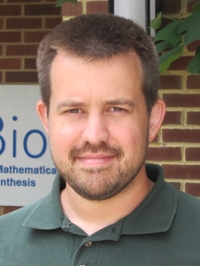 Time/Date: 3:30 p.m. p.m., Tuesday, September 10
Time/Date: 3:30 p.m. p.m., Tuesday, September 10Location: Room 105, Claxton Building, 1122 Volunteer Blvd.
Speaker: Jon Forde, Mathematics and Computer Science, Hobart and William Smith Colleges, and NIMBioS Sabbatical Fellow
Topic: Modeling the immune reaction to Hepatitis Delta infection
Abstract: Hepatitis Delta Virus (HDV) is a dependent satellite virus of the more common Hepatitis B Virus. HDV encodes only one protein of its own, relying on HBV to supply the additional proteins needed for its replication cycle. Although HDV is noncytotoxic and present few targets for immune reaction, the symptoms of patients with HBV-HDV co-infection are much worse than those infected with HBV alone. The cause of this negative outcome is not clear. This talk presents o.d.e. models for the interaction of HBV, HDV and the antigen-specific immune responses to explore recovery from T cell exhaustion as a possible explanation of negative outcomes in chronic HBV/HDV co-infection. Additionally, the role of the immune reaction in several other HDV-related phenomena will be discussed, including drug treatment failure and fluctuations in viral load. Click here for more information. Seminar flyer (pdf).
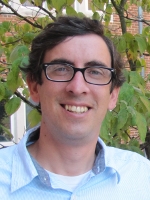 Time/Date: 3:30 p.m., Tuesday, August 27
Time/Date: 3:30 p.m., Tuesday, August 27 Location: Room 105, Claxton Building, 1122 Volunteer Blvd.
Speaker: Jeremy Beaulieu, NIMBioS postdoctoral fellow
Topic: Identifying hidden rate changes in the evolution of a binary morphological character: Examples from campanulid angiosperms
Abstract: The growth of phylogenetic trees in scope and in size is promising from the standpoint of understanding a wide variety of evolutionary patterns and processes. With trees comprised of larger, older, and globally distributed clades, it is likely that the liability of a binary character will differ significantly among lineages, which could lead to errors in estimating transition rates and the associated inference of ancestral states. Here I develop and implement a new method for identifying different rates of evolution in a binary character along different branches of a phylogeny. Iillustrate this approach by exploring the evolution of growth habit in the Campanulidae, a flowering plant clade containing some 35,000 species. The distribution of woody versus herbaceous species calls into question the use of traditional models of binary character evolution. The recognition and accommodation of changes in the rate of growth form evolution in different lineages demonstrates, for the first time, a robust picture of growth form evolution across a very large, very old, and very widespread flowering plant clade. I will also show how these methods can easily be extended to address other key questions in comparative biology. Click here for more information. Seminar flyer (pdf).
 This seminar has been canceled and will be rescheduled at a later time
This seminar has been canceled and will be rescheduled at a later timeTime/Date: 3:30 p.m., Tuesday, April 23
Location: Hallam Auditorium, Room 206, Claxton Building, 1122 Volunteer Blvd.
Speaker: Jeremy Beaulieu, NIMBioS postdoctoral fellow
Topic: Identifying hidden rate changes in the evolution of a binary morphological character: examples from campanulid angiosperms
Abstract: The growth of phylogenetic trees in scope and in size is promising from the standpoint of understanding a wide variety of evolutionary patterns and processes. With trees comprised of larger, older, and globally distributed clades, it is likely that the liability of a binary character will differ significantly among lineages, which could lead to errors in estimating transition rates and the associated inference of ancestral states. Here I develop and implement a new method for identifying different rates of evolution in a binary character along different branches of a phylogeny. Iillustrate this approach by exploring the evolution of growth habit in the Campanulidae, a flowering plant clade containing some 35,000 species. The distribution of woody versus herbaceous species calls into question the use of traditional models of binary character evolution. The recognition and accommodation of changes in the rate of growth form evolution in different lineages demonstrates, for the first time, a robust picture of growth form evolution across a very large, very old, and very widespread flowering plant clade. I will also show how these methods can easily be extended to address other key questions in comparative biology. Click here for more information. Seminar flyer (pdf).
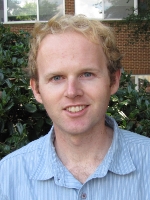 Time/Date: 3:30 p.m., Thursday, April 18
Time/Date: 3:30 p.m., Thursday, April 18Location: Hallam Auditorium, Room 206, Claxton Building, 1122 Volunteer Blvd.
Speaker: Chris Remien, NIMBioS postdoctoral fellow
Topic: Mathematical Modeling of Liver Injury from Acetaminophen Overdose
Abstract: Acetaminophen (paracetamol, APAP, trade names: Tylenol, Panadol, etc.) is one of the most common drugs on the planet. Though safe at therapeutic doses, APAP is the leading cause of acute liver injury in the developed world. I will present a dynamic mathematical model of APAP overdose, and show how the model can be used to estimate time since overdose, overdose amount, and outcome from measurable markers of liver injury at the time of hospital admission. Increasingly, APAP overdoses are the result of sustained overuse rather than a single-time overdose. Analysis of model dynamics shows that there is a simple threshold with respect to liver damage and APAP intake. The dynamics provide insight into why liver damage from APAP overdose is generally acute even with chronic use. Click here for more information. Seminar flyer (pdf).
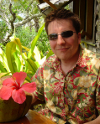 Time/Date: 3:30 p.m., Tuesday, April 16
Time/Date: 3:30 p.m., Tuesday, April 16Location: Hallam Auditorium, Room 206, Claxton Building, 1122 Volunteer Blvd.
Speaker: Tom Currie, Human Evolutionary Ecology Research Group, Univ. College London
Topic: War and space: Simulating the evolution of old world complex societies
Abstract: How did human societies evolve from small groups, integrated by face-to-face cooperation, to huge anonymous societies of today, typically organized as states? Why is there so much variation in the ability of different human populations to construct viable states? Existing theories are usually formulated as verbal models and, as a result, do not yield sharply defined, quantitative predictions that could be unambiguously tested with data. In this talk, I will discuss work I have been doing in conjunction with Sergey Gavrilets (NIMBioS, University of Tennessee) and Peter Turchin (University of Connecticut) to develop cultural evolutionary models that predict where and when the largest-scale complex societies arose in human history. Our initial model focuses on the role of costly ultrasocial institutions that enable groups to function without splitting up, and argues that these evolved as a result of intense competition between societies, primarily warfare. Warfare intensity, in turn, depended on the spread of historically-attested military technologies (e.g., chariots and cavalry) and on geographic factors (e.g., rugged landscape). The model was simulated within a realistic landscape of the Afroeurasian landmass, and its predictions were tested against a large dataset documenting the spatio-temporal distribution of historical large-scale societies in Afroeurasia between 1500 BCE and 1500 CE. The model-predicted pattern of spread of large-scale societies was very similar to the observed one. I will discuss the implications of this work and future directions we are exploring as part of my research visit to NIMBioS. Click here for more information. Seminar flyer (pdf).
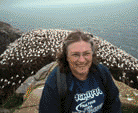
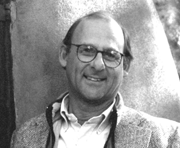 Time/Date: 3:30 p.m., Tuesday, April 9
Time/Date: 3:30 p.m., Tuesday, April 9Location: Hallam Auditorium, Room 206, Claxton Building, 1122 Volunteer Blvd.
Speakers: Lisa Sattenspiel, Anthropology, Univ. of Missouri, Columbia, and Dr. Alan Swedlund, Anthropology, Univ. of Massachusetts
Topic: Modeling the demography of a pre-Columbian Southwest US population: The Artificial Long House Valley (ALHV) project
Abstract: Population settlement, growth, expansion and eventual abandonment of ancestral Pueblo sites in the Four Corners region of the United States have posed enduring questions for bioarchaeologists and paleodemographers. An agent-based computer model, the Artificial Anasazi (AA) model, was developed to aid in understanding this population history. The model uses extensive archaeological and environmental data to simulate the rise and fall of populations in the Long House Valley, located in northeastern Arizona. It focuses on demographic changes at the household level, however, which prohibits it from incorporating individual-level demographic processes, such as age-specific fertility and mortality. These processes have been built into an extension of the model, which we call the Artificial Long House Valley (ALHV) model. Simulation outcomes from the ALHV model are very different from those of the AA model. In this talk we describe the structure of the two models, show how the results differ, and suggest reasons for these differences. We hope to generate discussion that will aid in determining how best to further incorporate individual-level demographic processes into the ALHV model to improve our efforts at measuring the impact of infectious disease, changes in fertility, and other individual-level factors on the collapse of the population and abandonment of the Long House Valley. Click here for more information. Seminar flyer (pdf).
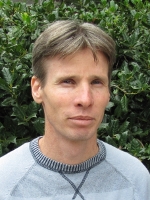 Time/Date: 3:30 p.m., Tuesday, April 2
Time/Date: 3:30 p.m., Tuesday, April 2Location: Hallam Auditorium, Room 206, Claxton Building, 1122 Volunteer Blvd.
Speaker: Amiyaal Ilany, NIMBioS Postdoctoral Fellow
Topic: Social networks in the hyrax and the hyena: from static to dynamic
Abstract: Understanding the forces shaping the social lives of animals is a central topic in the study of evolution. Although animal sociality has been studied extensively, until recently only rudimentary tools were available for the analysis of complex social structures and their multidirectional relationships with individual traits, life history and fitness. The rise of network science in the last decade introduced advanced tools that enable us to quantify the social structure in unprecedented detail. In this talk I will describe my recent studies on the rock hyrax and the spotted hyena. First, I describe the effect of the social structure on individual longevity. Next, I show how individual preferences for specific local social structures shape the network landscape. Then, I describe how the social structure shapes sexual selection. Finally, I present an approach for modeling social network dynamics. Click here for more information. Seminar flyer (pdf).
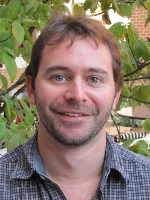 Time/Date: 3:30 p.m., Tuesday, March 19
Time/Date: 3:30 p.m., Tuesday, March 19Location: Hallam Auditorium, Room 206, Claxton Building, 1122 Volunteer Blvd.
Speaker: Ryan Martin, NIMBioS Postdoctoral Fellow
Topic: Ecological causes of phenotypic selection and divergence
Abstract: The concept of natural selection provides a powerful explanation for both the fit between organisms and their environment and for the origins of biological diversity. However, while natural selection describes the process that leads to adaptive evolution, it is not the cause. The causes (or "agents") of selection are those environmental conditions and ecological interactions that produce differential fitness between individuals. Agents of selection are often unidentified, and knowledge of their relative importance, how they interact, and if they differ in the form or magnitude of selection and evolution they cause is lacking. In this talk, I present several approaches for addressing this issue. First, I describe how resource competition causes disruptive selection favoring alternative resource specialist morphs in spadefoot toad tadpoles (Spea multiplicata), and how the strength of selection is spatially variable. Next, I describe how variation between populations in multiple, interacting environmental parameters causes evolutionary divergence in a complex trait, male coloration, in the Bahamas mosquitofish (Gambusia hubbsi). Finally, to explore patterns of natural selection and their causes across a broad range of taxa, I present preliminary results from a synthetic analysis of experimental studies manipulating ecological and environmental parameters to explore their affects on fitness. Click here for more information. Seminar flyer (pdf).
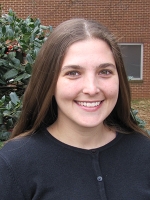 Time/Date: 3:30 p.m., Tuesday, March 5
Time/Date: 3:30 p.m., Tuesday, March 5Location: Hallam Auditorium, Room 206, Claxton Building, 1122 Volunteer Blvd.
Speaker: A. Michelle Lawing, NIMBioS Postdoctoral Fellow
Topic: Species geographic response to past climate change and the evolution of multivariate systems
Abstract: Geographically explicit models integrating data and methods from geology, ecology, evolution, and climate science provide a deeper understanding of the biology of climate change. I integrate rich geological and paleoclimatic data with an evolutionary concept of the climatic niche. Projecting phylogenetically informed species distribution models over the last three glacial-interglacial cycles (320 thousand years ago) indicates that species within the rattlesnake genus Crotalus tracked their habitat as opposed to adapting to climate change. The rate of geographic displacement of suitable habitat over the next century will be two to three orders of magnitude faster than it was over the last 320 thousand years. A deeper time perspective of spiny lizard (Sceloporus) response to climate change, early Miocene (20 million years ago) to present, shows that neutral models of climatic niche evolution are not validated with fossil occurrences. Better models and parameters to describe phylogenetic changes in climatic niches, and other multivariate systems, need to be explored. I propose a method that explicitly deals with the issues of non-independence of traits and variant covariance matrix structures by treating the covarying traits as a mathematical system that rotates, translates and scales through trait space. Click here for more information. Seminar flyer (pdf).
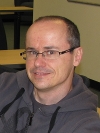 Time/Date: 3:30 p.m., Tuesday, February 26
Time/Date: 3:30 p.m., Tuesday, February 26Location: Hallam Auditorium, Room 206, Claxton Building, 1122 Volunteer Blvd.
Speaker: Ludek Berec, Dept. of Theoretical Ecology, Institute of Entomology, Biology Centre, Academy of Sciences of the Czech Republic; NIMBioS Postdoctoral Fellows Invited Distinguished Visitor
Topic: Allee effects and pest control
Abstract: Allee effects, or positive density dependence in one or more fitness components, still enjoy the glare of popularity, but are sometimes regarded as a sort of theoretical amusement with little practical consequences. This talk will deal with how Allee effects can be exploited in pest control. After briefly reviewing what Allee effects are and what supportive evidence we have for them, I will first illustrate how Allee effects can be strengthened to enhance pest control efficiency. One way of strengthening Allee effects is to introduce another component Allee effect, and I will present various ways in which component Allee effects may interact. Then I will demonstrate how Allee effects can be used to enhance efficiency of management of the invasive gypsy moth Lymantria dispar. Finally, I will show that neglecting uncertainty behind Allee effect estimation may generate false predictions of population extinction risk. Click here for more information. Seminar flyer (pdf).
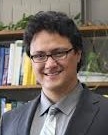 Time/Date: 3:30 p.m., Thursday, February 21
Time/Date: 3:30 p.m., Thursday, February 21Location: Hallam Auditorium, Room 206, Claxton Building, 1122 Volunteer Blvd.
Speaker: Kamuela Yong, Postdoctoral Research Scholar, Mathematical, Computational & Modeling Sciences Center, Arizona State Univ.
Topic: Estimating biting rates of triatomine on preferred sylvatic hosts in overlapping vector-host cycles
Abstract: The parasite Trypanosoma cruzi, spread by triatomine vectors, affects more than 100 mammalian species throughout the Americas, including humans, in whom it causes Chagas' disease. In the U.S., only a few cases have been documented of human infection by vectors, but prevalence is high in sylvatic hosts (primarily raccoons in the southeast and woodrats in Texas). The sylvatic transmission of T. cruzi is spread by the vector species Triatoma sanguisuga and Triatoma gerstaeckeri biting their preferred hosts and thus creating multiple interacting vector-hosts cycles. The goal of this study is to quantify the number of contacts between different host and vector species in Texas from an agent-based model framework. The contact rates, which represent bites, are required to estimate transmission coefficients, which can be applied to models of infection dynamics. Click here for more information. Seminar flyer (pdf).
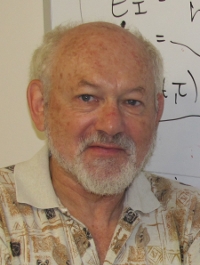 Time/Date: 3:30 p.m., Tuesday, February 12
Time/Date: 3:30 p.m., Tuesday, February 12Location: Hallam Auditorium, Room 206, Claxton Building, 1122 Volunteer Blvd.
Speaker: David Gurarie, Mathematics, Center for Global Health and Diseases, Case Western Reserve Univ.
Topic: Agent-based approach to malaria: immunology, population genetics and evolution of virulence
Abstract: Multiple factors determine spread of parasites in host populations. They include within-host level (invasion, resource competition, immune regulation), and population level (transmission environment, parasite-vector interactions). The combined effect of these factors drives parasite evolution and selection. The talk will review some conventional theories of host-parasite evolution. Then I shall outline an agent-based approach that allows integration of multiple levels and processes. These models will be applied to study virulence selection for malaria-type parasites. Click here for more information. Seminar flyer (pdf).
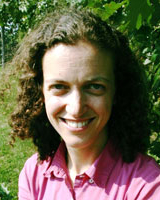 Time/Date: 3:30 p.m., Tuesday, January 29
Time/Date: 3:30 p.m., Tuesday, January 29Location: Hallam Auditorium, Room 206, Claxton Building, 1122 Volunteer Blvd.
Speaker: Helene Muller-Landau, Lead Scientist of CTFS Global Forest Carbon Research Initiative, Smithsonian Tropical Research Institute; NIMBioS Postdoctoral Fellows Invited Distinguished Visitor
Topic: Species coexistence and spatial patterns in plant communities
Abstract: Two applications of ecological theory to investigate variation in plant communities will be presented. (1) Seed size commonly varies by several orders of magnitude among coexisting plant species, a pattern ecologists have long sought to explain. Previous explanations have focused on either a balance between seed size and per-seed success in and of itself, or on a competition-colonization tradeoff. However, neither of these explanations is consistent with empirical data, including data from the tropical forest on Barro Colorado Island, Panama. I present an analytically tractable alternative model, the tolerance-fecundity tradeoff, in which the higher seed number of small-seeded species trades off against a higher stress-tolerance of large-seeded species and mediates coexistence in the presence of habitat heterogeneity in site stressfulness. (2) Nonrandom spatial patterns are ubiquitous in ecological communities and often reflect a multiplicity of processes acting over a wide range of scales. I show how a new method, developed with Matteo Detto, uses the scale-wise variance (wavelet variance) to disentangle the signatures of processes acting at different and similar scales on observed patterns. These methods, together with exact and approximate (moment closure-based) analytical solutions for the expected scale-wise variance under different individual-based, spatially explicit models, make it possible to estimate process parameters from spatial patterns. The methods are demonstrated through numerical examples and case studies of tropical tree species. Click here for more information. Seminar flyer (pdf).
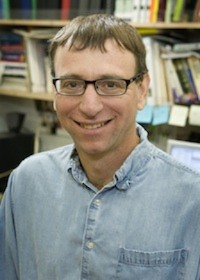 Time/Date: 3:30 p.m., Thursday, Janaury 17
Time/Date: 3:30 p.m., Thursday, Janaury 17Location: Hallam Auditorium, Room 206, Claxton Building, 1122 Volunteer Blvd.
Speaker: Dan Blumstein, Ecology & Evolutionary Biology, UCLA
Presented in conjunction with the UTK Dept. of Ecology & Evolutionary Biology
Topic: The sound of fear: A journey from marmot meadows to Hollywood
Abstract: What is it that makes certain sounds scary? Why are screams particularly evocative? To explore this, I will discuss insights from over two decades of studying marmots - large, mostly-alpine, ground squirrels – that live throughout the northern hemisphere. I will talk both about the evolution and function of alarm calls, and end with a discussion of similarities among species, including humans, in the structure of fear screams and other scary and arousing sounds. I will discuss correlative and experimental studies on humans to evaluate the hypothesis that fearful and arousing sounds contain specific types of nonlinear acoustic phenomena, including noise. Finally, I review recent experimental work where by composing 'marmot-inspired music' we have determined that noise and other non-linear phenomena may be generally arousing and fear inducing. The sound of fear may indeed be noisy. Click here for more information. Seminar flyer (pdf).
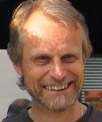 Time/Date: 3:30 p.m., Tuesday, January 15
Time/Date: 3:30 p.m., Tuesday, January 15Location: Hallam Auditorium, Room 206, Claxton Building, 1122 Volunteer Blvd.
Speaker: Odo Diekmann, Mathematical Institute of Utrecht Univ.; NIMBioS Postdoctoral Fellows Invited Distinguished Visitor
Topic: How to compute R_0? (The general idea and a complicated example)
Abstract: After introducing some general concepts underlying structured population models, in particular the notions of i-state (i for individual) and i-state-at-birth, I shall focus on the way to deduce generation dynamics from real time dynamics and show how to construct a next-generation matrix from a decomposition of the relevant Jacobi matrix into a transition part and a transmission part. Next I will consider a model for infectious disease transmission on a dynamic sexual network. The population model incorporates demographic turnover as well as, for each individual, a variable number of simultaneous partnerships. The resulting network serves as a template for the transmission of an infectious disease. The first aim is to characterize R_0. The ultimate aim is to shed some light on the impact of concurrency on the spread of HIV. This part of the talk is based on ongoing joint work with KaYin Leung and Mirjam Kretzschmar. Click here for more information. Seminar flyer (pdf).
NIMBioS
1122 Volunteer Blvd., Suite 106
University of Tennessee
Knoxville,
TN 37996-3410
PH: (865) 974-9334
FAX: (865) 974-9461
Contact NIMBioS


